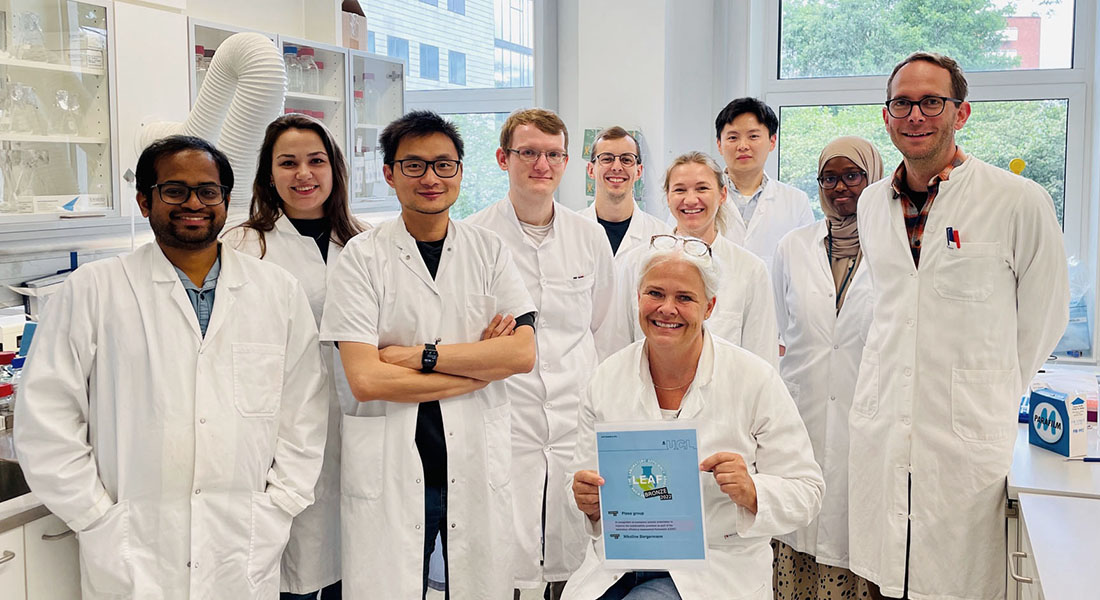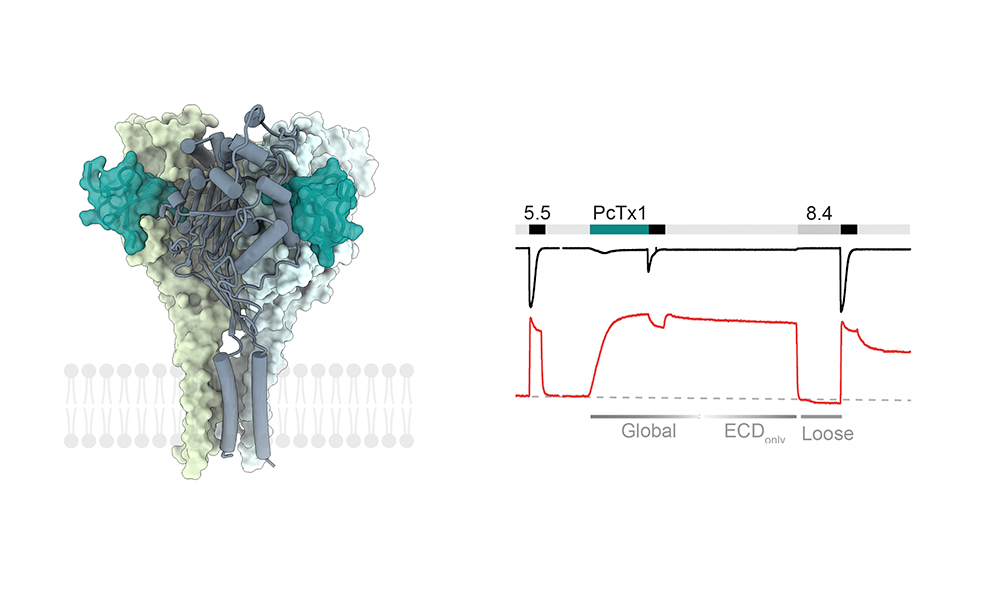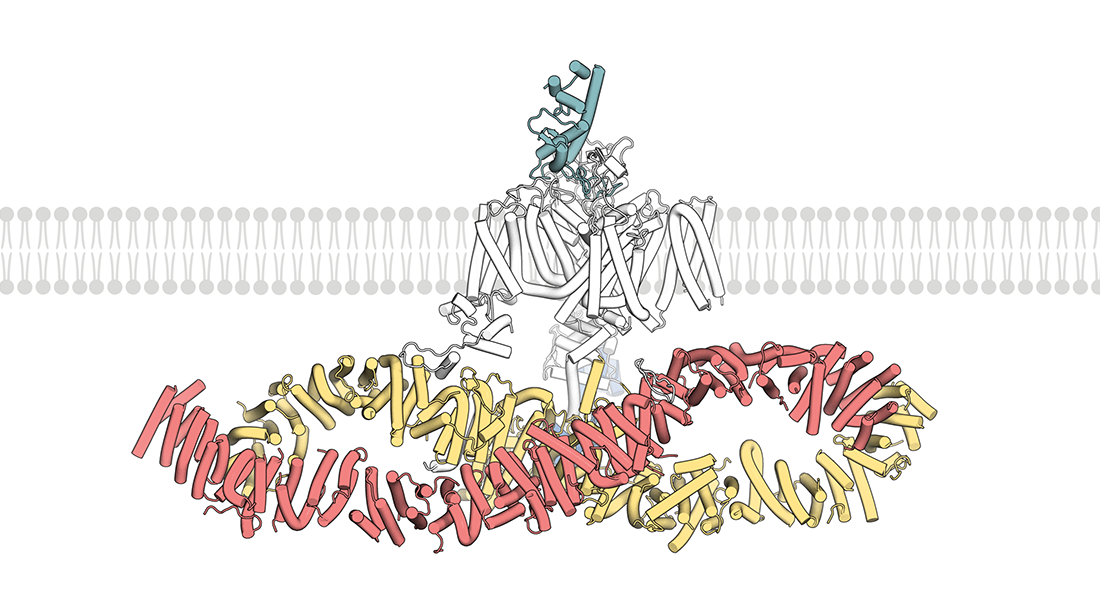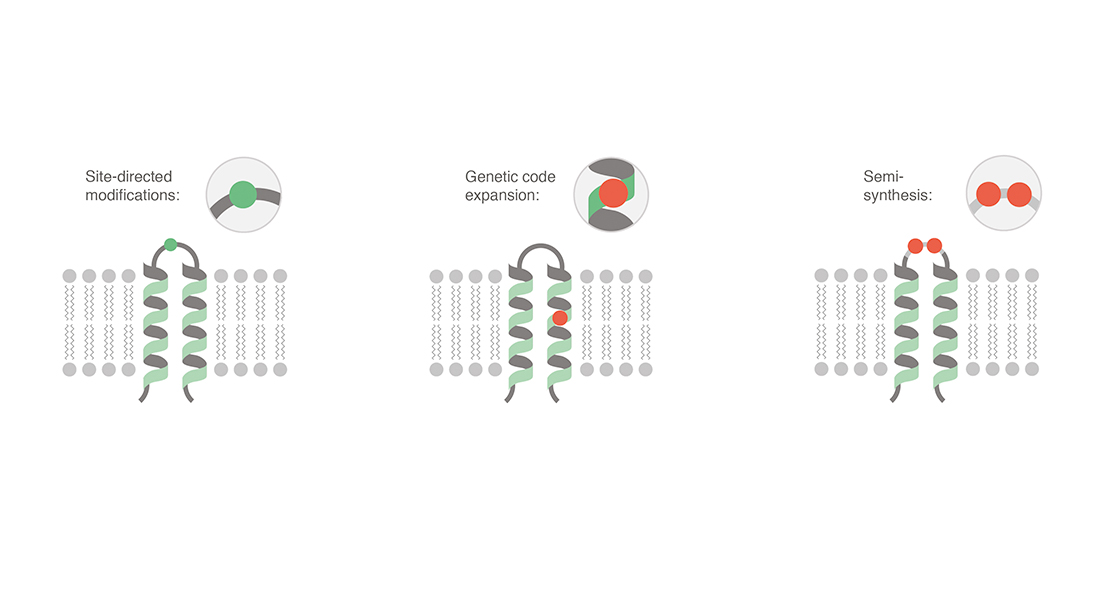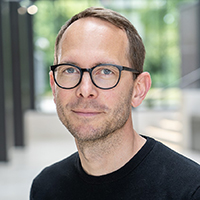Pless Lab
The primary focus of our group is to understand the function and pharmacology of physiologically relevant ion channels. A secondary focus is the development of chemical biology tools to study membrane proteins. Together, this will allow future targeting of these proteins with high precision.
How do ions cross cell membranes? This question is key to understanding how muscles move our body, how the heart beats and how hormones are secreted – all these processes are mediated by ion channels. These are membrane proteins that allow ions to cross membranes in response to a range of stimuli, such as neurotransmitter binding, membrane voltage, heat or stretch.
We study their function and pharmacology using electrophysiology, chemical biology, protein engineering and spectroscopy. Our work aids both the basic understanding of these proteins, as well as our ability to target them therapeutically.
Research Area #1: Function, pharmacology, ligand design and protein-protein interactions of trimeric ligand-gated ion channels (ASICs and P2X receptors) involved in pain, inflammation and stroke.
Research Area #2: Function, patient mutations, ligand design and protein-protein interactions of the NALCN channelosome, whose dysfunction results in devastating neurodevelopmental diseases.
Research Area #3: Protein engineering through employing and developing new chemical biology and biophysical tools. This includes fluorescent labeling, genetic code expansion and protein semi-synthesis.
Heusser, S.A & Borg, C.B. (...) Pless, S.A.; “Conformational decoupling in acid-sensing ion channels uncovers mechanism and stoichiometry of PcTx1-mediated inhibition”; eLife, 2022.
Kschonsak, M, Chua, H.C, (...) Pless, S.A., Payandeh, J.; “Structural architecture of the human NALCN channelosome”; Nature, 2022.
Khoo, K.K. & Gallenao, I. (...) Pless, S.A.; “Chemical modification of proteins by insertion of synthetic peptides using tandem protein trans-splicing”; Nature Communications, 2020.
Chua, H.C. (...) Pless, S.A.; “The NALCN leak channel complex is modulated by voltage and extracellular calcium”; Science Advances
Borg, C.B., Braun, N. (...) Pless, S.A.; “Mechanism and site of action of big dynorphin on ASIC1a”; PNAS, 2020.
Wulf, M. & Pless, S.A.; "High-sensitivity fluorometry to resolve ion channel conformational dynamics"; Cell Reports, 2018.
We are always interested to hear from motivated students that would like to carry out their MSc thesis work in our group. Please send your CV, grades and a brief text outlining your motivation for joining the group to stephan.pless@sund.ku.dk.
Team Members
| Name | Title | Phone | |
|---|---|---|---|
| Search in Name | Search in Title | Search in Phone | |
| Emma Krindel Beyer | PhD Fellow | ||
| Hendrik Harms | Postdoc | +4535331514 | |
| Janina Soermann | Assistant Professor | +4535335996 | |
| Janne Møgelhøj Colding | Laboratory Coordinator | +4535336548 |
External PhD students, students and alumni:
| Name | |
|---|---|
| PhD student Feng Xue | zpc811@sund.ku.dk |
| Mikkel Aaby Jensen | kvf186@sund.ku.dk |
| Ann Sofie Ploug |
ngs863@alumni.ku.dk |
| Natasja Jacobsen |
fpq910@alumni.ku.dk |

